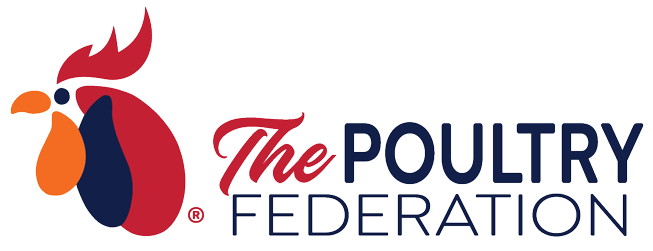A research team at the University of Minnesota (UM), College of Veterinary Medicine recently published on studies conducted to determine the extent of dissemination of avian influenza virus from infected flocks.*
In a December 13th University of Minnesota release, the research team led by Dr. Montserrat Torremorell, described studies on the distribution and spread of swine influenza virus applying similar techniques as used in the poultry studies to ascertain the presence of the pathogen in the air within hog barns, in exhaust streams and in the vicinity of farms.
During the spring 2015 HPAI outbreaks, H5N2 avian influenza virus was isolated from the environment of infected flocks and in exhaust air streams within 300 feet from houses. In addition, virus could be recovered from the ground in the vicinity of farms suggesting that intra-farm dissemination of virus occurs.
The presence of viable avian influenza virus on surfaces in the vicinity of barns holding infected flocks creates the potential to pass infection between farms unless appropriate biosecurity precautions are followed. What would be interesting is to confirm the presumption that virus remains viable at relatively low temperature on surfaces such as earth especially in the presence of moisture and biological material. Survival of virus should be compared to impervious surfaces such as concrete or blacktop with and without exposure to sunlight and effective disinfectants.
The studies on hogs detailed in the UM press release demonstrated the presence of swine influenza virus on particles suspended in air within houses, corresponding to the excretion of virus from animals in the herd. The virus could also be isolated from soil up to a mile from infected farms raising the question as to whether exhaust streams or wind can disseminate virus from a concentration of infected hogs or poultry.
-
Virus shed by migratory waterfowl in the vicinity of houses can remain viable for some time and theoretically can be tracked into houses in the absence of appropriate biosecurity precautions. At a minimum, Operational Biosecurity should involve a complete change of outer clothing and footwear at the entrance to the farm and a change of footwear on entry to each house.
-
The persistence of influenza virus can be influenced by surface characteristics. Roads and aprons in the vicinity of houses which are constructed with a layer of blacktop or concrete will probably not support viability of virus for more than a few hours. Prolonged infectivity can be expected on soil mixed with biological material.
-
Although it would seem epidemiologically beneficial to filter air entering houses the complexity of installations and their cost raises questions of feasibility and practicality unless there is a high probability of introducing infection.
-
Investment in Structural Biosecurity is a function of :
- The risk of infection
- The financial consequences of introducing a disease
- The effectiveness of the modality such as filtration or ultraviolet radiation
In studies on the epidemiology of avian influenza among turkey farms in Minnesota it was concluded that migratory waterfowl in all probability introduced the H5N2 virus although there was negligible evidence of persistence among free-living birds during post-outbreak surveillance. Dissemination of virus and the high incidence rate of infection in affected counties was attributed to defects in both Structural and Operational biosecurity as determined by surveys which identified risk factors for introduction of infection.
In contradistinction geospatial evaluation failed to correlate wind direction with the temporal and spatial sequence of outbreaks. Notwithstanding this general conclusion anecdotal evidence was highly suggestive of individual cases of aerogenous spread of virus among closely located farms in Minnesota and one case in Wisconsin.
Multiplication of virus occurs in a large flock following infection. Dissemination is possible over short distances in exhaust streams which entrain virus-laden dust particles which are deposited on roads and soil surfaces. The possibility of subsequent spread by mechanical transport on tires and footwear is self-evident. It is for this reason that current control procedures mandate deactivation of ventilation systems followed by and rapid depopulation of a flock.
This is accomplished using carbon dioxide foam for floor houses or VSD for high-density cage units. Control of an outbreak is impeded by delays in depopulating flocks and herds as evidenced by the early stage of the mid-West epornitic and current events in South Korea. In contrast prompt and appropriate action in the Indiana “pop-up” outbreak in January 2016 confined spread and restricted the infection to nine houses despite the high density of poultry in the counties surrounding the index farm.
It is evident that both Structural and Operational biosecurity should be complementary since the two components of the system are mutually dependent. With neglect of aspects of either Structural or Operational biosecurity, the entire system of protection fails with disastrous economic consequences when flocks are exposed to a catastrophic disease such as highly pathogenic avian influenza.
*Torremorell, M et al. (2016) Investigation into the Airborne Dissemination of H5N2 Highly Pathogenic Avian Influenza Virus During the 2015 Spring Outbreak in the mid-Western U.S. Avian Diseases 60:637-643.
Source: chick-cite.com



































